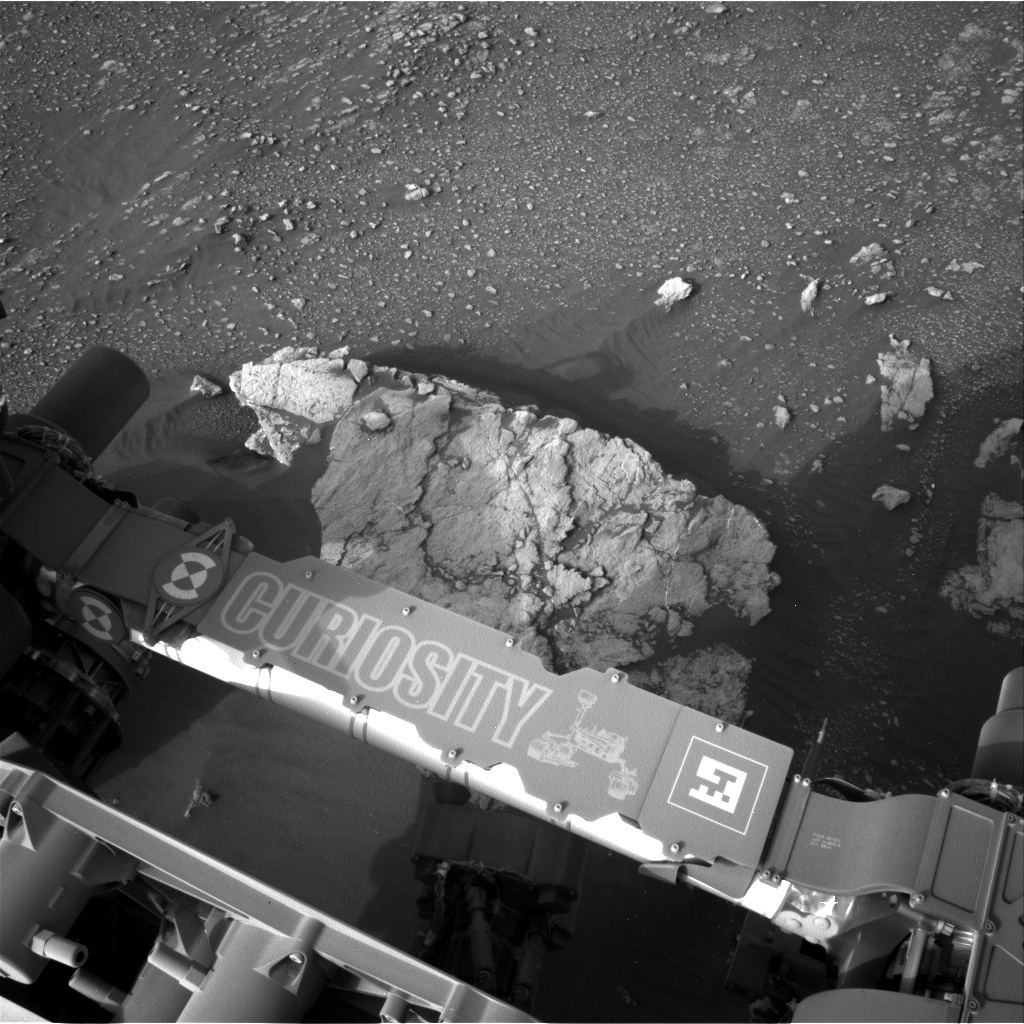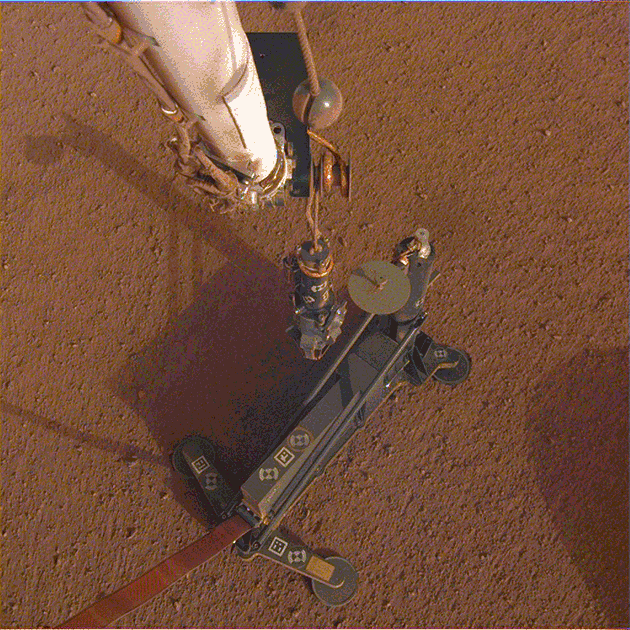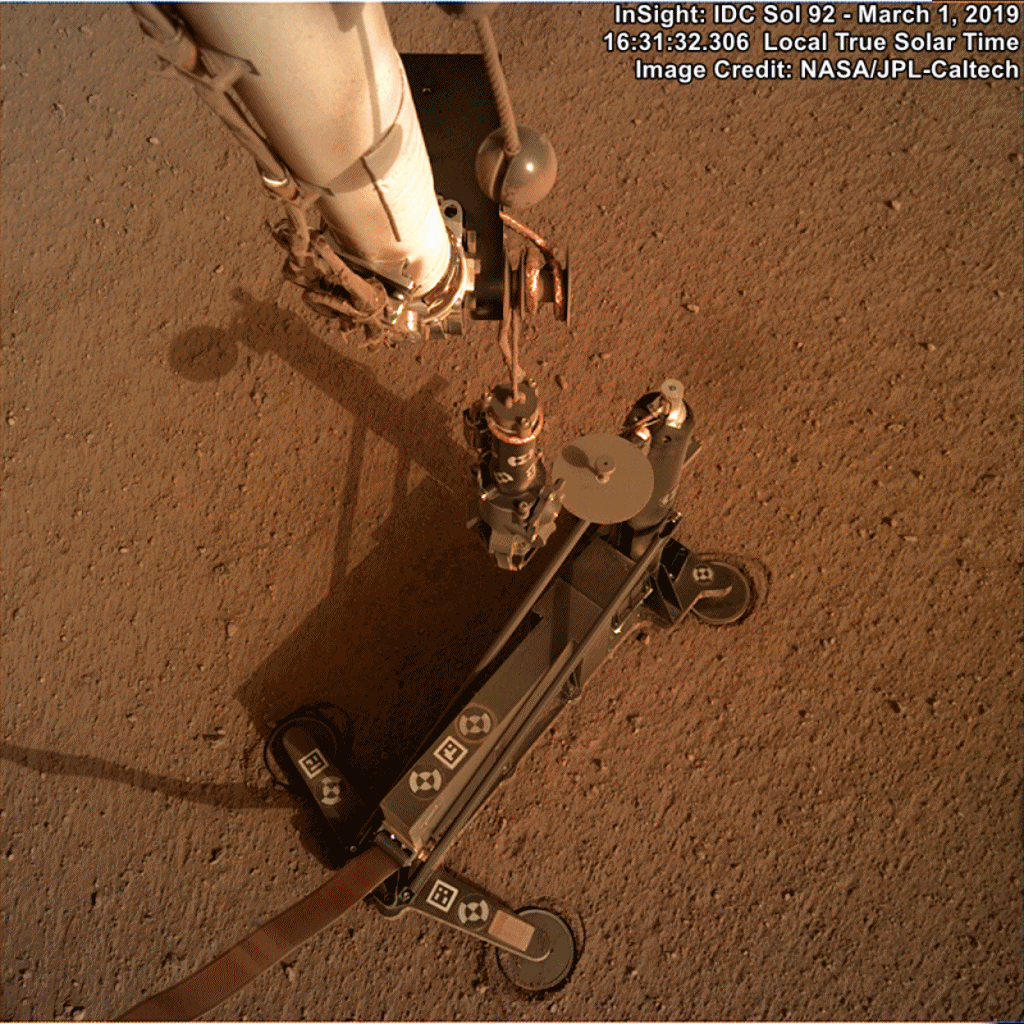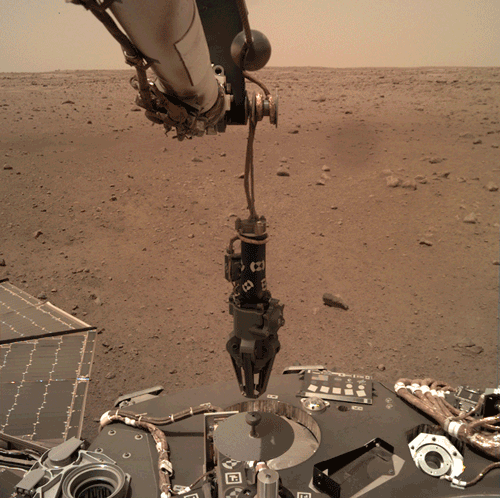MARS: CURIOSITY u krateru GALE Vol II.
ex-iskon-pleme :: Društvo :: Znanost
Page 32 of 50
Page 32 of 50 •  1 ... 17 ... 31, 32, 33 ... 41 ... 50
1 ... 17 ... 31, 32, 33 ... 41 ... 50 
 Re: MARS: CURIOSITY u krateru GALE Vol II.
Re: MARS: CURIOSITY u krateru GALE Vol II.
Feb. 22, 2019
After a Reset, Curiosity Is Operating Normally

NASA's Curiosity Mars took this image with its Mastcam on Feb. 10, 2019 (Sol 2316). The rover is currently exploring a region of Mount Sharp nicknamed "Glen Torridon" that has lots of clay minerals.
Credits: NASA/JPL-Caltech/MSSS
Full image and caption
NASA's Curiosity rover is busy making new discoveries on Mars. The rover has been climbing Mount Sharp since 2014 and recently reached a clay region that may offer new clues about the ancient Martian environment's potential to support life.
Curiosity encountered a hurdle last Friday, when a hiccup during boot-up interrupted its planned activities and triggered a protective safe mode. The rover was brought out of this mode on Tuesday, Feb. 19, and is otherwise operating normally, having successfully booted up over 30 times without further issues.
Throughout the weekend, Curiosity was sending and receiving technical data, communicating with the team in order to help them pinpoint the cause of the issue.
"We're still not sure of its exact cause and are gathering the relevant data for analysis," said Steven Lee, Curiosity's deputy project manager at NASA's Jet Propulsion Laboratory in Pasadena, California. JPL leads the Curiosity mission. "The rover experienced a one-time computer reset but has operated normally ever since, which is a good sign," he added. "We're currently working to take a snapshot of its memory to better understand what might have happened."
Out of an abundance of caution, Lee said, science operations will remain on hold until the issue is better understood.
"In the short term, we are limiting commands to the vehicle to minimize changes to its memory," Lee said. "We don't want to destroy any evidence of what might have caused the computer reset. As a result, we expect science operations will be suspended for a short period of time."
Curiosity is one of two NASA spacecraft actively studying the Martian surface. InSight, a stationary lander, reached the planet on Nov. 26; Opportunity, which ran for more than 14 years, has completed its mission.
Curiosity has been exploring a region — dubbed "Glen Torridon" — where clay minerals can be seen from orbit. Clay minerals, which form in water, are especially interesting to the rover's science team. The rover was designed specifically to study ancient environments that could have supported life, and water plays a key role in determining that.
While the engineers address the computer reset, the science team will continue studying the images and other data that have been collected from Glen Torridon. A potential drill location has been sighted just 656 feet (200 meters) away.
"The science team is eager to drill our first sample from this fascinating location," said JPL's Ashwin Vasavada, Curiosity's project scientist. "We don’t yet understand how this area fits into the overall history of Mount Sharp, so our recent images give us plenty to think about."
Jet Propulsion Laboratory, Pasadena, Calif.
818-393-2433
andrew.c.good@jpl.nasa.gov
2019-029
Last Updated: Feb. 23, 2019
Editor: Tony Greicius
After a Reset, Curiosity Is Operating Normally

NASA's Curiosity Mars took this image with its Mastcam on Feb. 10, 2019 (Sol 2316). The rover is currently exploring a region of Mount Sharp nicknamed "Glen Torridon" that has lots of clay minerals.
Credits: NASA/JPL-Caltech/MSSS
Full image and caption
NASA's Curiosity rover is busy making new discoveries on Mars. The rover has been climbing Mount Sharp since 2014 and recently reached a clay region that may offer new clues about the ancient Martian environment's potential to support life.
Curiosity encountered a hurdle last Friday, when a hiccup during boot-up interrupted its planned activities and triggered a protective safe mode. The rover was brought out of this mode on Tuesday, Feb. 19, and is otherwise operating normally, having successfully booted up over 30 times without further issues.
Throughout the weekend, Curiosity was sending and receiving technical data, communicating with the team in order to help them pinpoint the cause of the issue.
"We're still not sure of its exact cause and are gathering the relevant data for analysis," said Steven Lee, Curiosity's deputy project manager at NASA's Jet Propulsion Laboratory in Pasadena, California. JPL leads the Curiosity mission. "The rover experienced a one-time computer reset but has operated normally ever since, which is a good sign," he added. "We're currently working to take a snapshot of its memory to better understand what might have happened."
Out of an abundance of caution, Lee said, science operations will remain on hold until the issue is better understood.
"In the short term, we are limiting commands to the vehicle to minimize changes to its memory," Lee said. "We don't want to destroy any evidence of what might have caused the computer reset. As a result, we expect science operations will be suspended for a short period of time."
Curiosity is one of two NASA spacecraft actively studying the Martian surface. InSight, a stationary lander, reached the planet on Nov. 26; Opportunity, which ran for more than 14 years, has completed its mission.
Curiosity has been exploring a region — dubbed "Glen Torridon" — where clay minerals can be seen from orbit. Clay minerals, which form in water, are especially interesting to the rover's science team. The rover was designed specifically to study ancient environments that could have supported life, and water plays a key role in determining that.
While the engineers address the computer reset, the science team will continue studying the images and other data that have been collected from Glen Torridon. A potential drill location has been sighted just 656 feet (200 meters) away.
"The science team is eager to drill our first sample from this fascinating location," said JPL's Ashwin Vasavada, Curiosity's project scientist. "We don’t yet understand how this area fits into the overall history of Mount Sharp, so our recent images give us plenty to think about."
For more information about Curiosity, visit:
https://mars.nasa.gov/msl/
Andrew GoodJet Propulsion Laboratory, Pasadena, Calif.
818-393-2433
andrew.c.good@jpl.nasa.gov
2019-029
Last Updated: Feb. 23, 2019
Editor: Tony Greicius
Eroo- Posts : 79056
2016-07-22

Eroo- Posts : 79056
2016-07-22
 Re: MARS: CURIOSITY u krateru GALE Vol II.
Re: MARS: CURIOSITY u krateru GALE Vol II.

Usput i o InSight landeru, dok u punom iznosu ne profunkcionira Curiosity.
_________________
Nulla rosa sine spina

Eroo- Posts : 79056
2016-07-22
 Re: MARS: CURIOSITY u krateru GALE Vol II.
Re: MARS: CURIOSITY u krateru GALE Vol II.
Djelomični selfi na sol 2214


_________________
Nulla rosa sine spina

Eroo- Posts : 79056
2016-07-22

Eroo- Posts : 79056
2016-07-22
 Re: MARS: CURIOSITY u krateru GALE Vol II.
Re: MARS: CURIOSITY u krateru GALE Vol II.

https://www.dlr.de/blogs/en/desktopdefault.aspx/tabid-5893/9577_read-1090/
_________________
Nulla rosa sine spina

Eroo- Posts : 79056
2016-07-22

Eroo- Posts : 79056
2016-07-22
 Re: MARS: CURIOSITY u krateru GALE Vol II.
Re: MARS: CURIOSITY u krateru GALE Vol II.
Sol 2333: Back in action at Midland Valley
Written by Melissa Rice on 02.28.2019
NASA's Mars rover Curiosity acquired this image using its Left Navigation Camera (Navcams) on Sol 2320 Credit: NASA/JPL-Caltech
Image of the "Midland Valley" outcrop taken by the Left Navigation camera onboard NASA's Mars rover Curiosity on Sol 2320.
Curiosity returned to science planning today after a two week hiatus because of a technical issue. Our most recent science plan, described in the blog for Sols 2320-2323, included a drive towards a blocky outcrop called "Midland Valley." The drive was a success, bringing us right on top of the beautiful chunk of rock shown above - but before we could reach out and touch it, Curiosity went into safe mode. While the engineers worked to return Curiosity to nominal operations, the science team stood down from planning, eagerly awaiting our chance to get a closer look at Midland Valley.
Today's plan includes that closer look. With Mastcam, ChemCam, MAHLI and APXS, we'll investigate two spots on the outcrop: "Alloa" and "Auchterarder." Mastcam will also survey our surroundings with mosaics of wind-blown sand features ("Mormond Hill," "Motherwell" and "Mount Keen"), a look back at our previous workspace (towards the previously-explored targets "Curlew" and "Gannet"), a look ahead towards a potential future drive destination (at an area with blocky outcrop called "Milltimber"), and a look up to the sky at the dust in the atmosphere. In addition, ChemCam will use LIBS (the laser) to investigate another rock target called "Crathes."
The engineering team is working hard to understand the issue that occurred on sol 2320, and upcoming plans will be dedicated to diagnostic activities. We will update you as we learn more, and in the meantime, the new observations from Midland Valley will keep us scientists busy!
_________________
Nulla rosa sine spina

Eroo- Posts : 79056
2016-07-22
 Re: MARS: CURIOSITY u krateru GALE Vol II.
Re: MARS: CURIOSITY u krateru GALE Vol II.
Još cca 200 m do sljedećeg cilja, gdje će se vršiti vrtanje uzoraka u "sprženoj" glini...
 nearest shell station near me
nearest shell station near me
 nearest shell station near me
nearest shell station near me_________________
Nulla rosa sine spina

Eroo- Posts : 79056
2016-07-22

Eroo- Posts : 79056
2016-07-22
 Re: MARS: CURIOSITY u krateru GALE Vol II.
Re: MARS: CURIOSITY u krateru GALE Vol II.
The Bruce Murray Space Image Library
Result's of InSight's first hammering attempt, sol 92

NASA / JPL-Caltech
Result's of InSight's first hammering attempt, sol 92
InSight's mole hammered away for four hours on sol 92 (1 March 2019), but didn't penetrate very far because it encountered a rock, a complication that wasn't unexpected. The effort shifted the position of the instrument housing by 2 centimeters. More hammering is planned, and the probe should be able to continue burying itself.
Result's of InSight's first hammering attempt, sol 92

NASA / JPL-Caltech
Result's of InSight's first hammering attempt, sol 92
InSight's mole hammered away for four hours on sol 92 (1 March 2019), but didn't penetrate very far because it encountered a rock, a complication that wasn't unexpected. The effort shifted the position of the instrument housing by 2 centimeters. More hammering is planned, and the probe should be able to continue burying itself.
_________________
Nulla rosa sine spina

Eroo- Posts : 79056
2016-07-22
 Re: MARS: CURIOSITY u krateru GALE Vol II.
Re: MARS: CURIOSITY u krateru GALE Vol II.
Zabijanje se nastavlja...očigledno je naletio na kamen, kojega s pomicanjem nastoji zaobići.

_________________
Nulla rosa sine spina

Eroo- Posts : 79056
2016-07-22
 Re: MARS: CURIOSITY u krateru GALE Vol II.
Re: MARS: CURIOSITY u krateru GALE Vol II.
sol 2338 ...pošto još nema službeno, ovo je samo cca!


_________________
Nulla rosa sine spina

Eroo- Posts : 79056
2016-07-22

Eroo- Posts : 79056
2016-07-22
 Re: MARS: CURIOSITY u krateru GALE Vol II.
Re: MARS: CURIOSITY u krateru GALE Vol II.
sol 2338 ...preciznije, ali još uvijek nije službena verzija.


_________________
Nulla rosa sine spina

Eroo- Posts : 79056
2016-07-22

Eroo- Posts : 79056
2016-07-22
 Re: MARS: CURIOSITY u krateru GALE Vol II.
Re: MARS: CURIOSITY u krateru GALE Vol II.
INSight je upravo završio drugo zabijanje "krtice".
Naletio je na kamen i sad je cca 45 cm duboko, o
pod kutom od vertikale 15°. Slijede planirana mjerenja...

Naletio je na kamen i sad je cca 45 cm duboko, o
pod kutom od vertikale 15°. Slijede planirana mjerenja...

_________________
Nulla rosa sine spina

Eroo- Posts : 79056
2016-07-22
 Re: MARS: CURIOSITY u krateru GALE Vol II.
Re: MARS: CURIOSITY u krateru GALE Vol II.
Precizno "sašiveno" (a. Ian van Driel).


_________________
Nulla rosa sine spina

Eroo- Posts : 79056
2016-07-22

Eroo- Posts : 79056
2016-07-22

Eroo- Posts : 79056
2016-07-22
 Re: MARS: CURIOSITY u krateru GALE Vol II.
Re: MARS: CURIOSITY u krateru GALE Vol II.
Logbook entry: 6 March 2019
Excellent news! We just got the data from the first Phobos eclipse observation and the cooling by the shadow passing through the fields of view of the radiometer in about 30 seconds is clearly visible. The cooling is by about 1°C and is thus somewhat larger than expected and certainly better than with the most pessimistic estimates (that would have said, we will not be able to see it at all)! So the team is happy and is rejoicing about the first eclipse on Mars ever observed with a radiometer.
What is the significance of the observation? There is a quantity that scientists call the thermal inertia. This quantity depends on the thermal conductivity of the near surface material, its density and its heat capacity. A small value indicates low thermal conductivity, for instance, or a large porosity (meaning low density) etc. The larger the thermal inertia, the smaller the effect. In particular, if the shadow moves through rapidly and the inertia is large, little effect will be measured. The measurable effect is the more pronounced the smaller the inertia. The team will now have to analyze the data and come up with a model of the uppermost millimeters or so of the surface material. So, it is part of our efforts to measure the geophysical paramters of Mars.
 Quelle: NASA/JPL-Caltech/DLR
Quelle: NASA/JPL-Caltech/DLR
As for the mole, the team has commanded a large number of images to be taken by the cameras on the lander and the arm. Some of the images we already have, indicate that part of the mole is actually visible. The consensus is that the mole is about 30 cm in the regolith and probably still 7cm in the tube of the support structure. It is approximately pointing 15° away from the vertical and has undergone either some rotation or precession of its rotation axis.
It is still healthy but, of course, Its life time is limited - in terms of hammering strokes it can make before it is worn down - although we are not concerned that it would breake soon. Still, the team wants to play it safe and get all the evidence that could become available including seismic data together to see how we can help the mole to overcome the obstacle (or to get through a possible layer of gravel). Once we have all the data, we will decide on how to proceed best.
Stay tuned
Excellent news! We just got the data from the first Phobos eclipse observation and the cooling by the shadow passing through the fields of view of the radiometer in about 30 seconds is clearly visible. The cooling is by about 1°C and is thus somewhat larger than expected and certainly better than with the most pessimistic estimates (that would have said, we will not be able to see it at all)! So the team is happy and is rejoicing about the first eclipse on Mars ever observed with a radiometer.
What is the significance of the observation? There is a quantity that scientists call the thermal inertia. This quantity depends on the thermal conductivity of the near surface material, its density and its heat capacity. A small value indicates low thermal conductivity, for instance, or a large porosity (meaning low density) etc. The larger the thermal inertia, the smaller the effect. In particular, if the shadow moves through rapidly and the inertia is large, little effect will be measured. The measurable effect is the more pronounced the smaller the inertia. The team will now have to analyze the data and come up with a model of the uppermost millimeters or so of the surface material. So, it is part of our efforts to measure the geophysical paramters of Mars.
As for the mole, the team has commanded a large number of images to be taken by the cameras on the lander and the arm. Some of the images we already have, indicate that part of the mole is actually visible. The consensus is that the mole is about 30 cm in the regolith and probably still 7cm in the tube of the support structure. It is approximately pointing 15° away from the vertical and has undergone either some rotation or precession of its rotation axis.
It is still healthy but, of course, Its life time is limited - in terms of hammering strokes it can make before it is worn down - although we are not concerned that it would breake soon. Still, the team wants to play it safe and get all the evidence that could become available including seismic data together to see how we can help the mole to overcome the obstacle (or to get through a possible layer of gravel). Once we have all the data, we will decide on how to proceed best.
Stay tuned
_________________
Nulla rosa sine spina

Eroo- Posts : 79056
2016-07-22
Page 32 of 50 •  1 ... 17 ... 31, 32, 33 ... 41 ... 50
1 ... 17 ... 31, 32, 33 ... 41 ... 50 
 Similar topics
Similar topics» MARS: CURIOSITY u krateru GALE
» MARS: CURIOSITY u krateru GALE Vol II.
» MARS: CURIOSITY u krateru GALE Vol II.
» Exciting snimak, upravo pristigao s Marsa (krater Gale, rover Curiosity)
» The latest Selfie from Curiosity taken yesterday on Mars
» MARS: CURIOSITY u krateru GALE Vol II.
» MARS: CURIOSITY u krateru GALE Vol II.
» Exciting snimak, upravo pristigao s Marsa (krater Gale, rover Curiosity)
» The latest Selfie from Curiosity taken yesterday on Mars
ex-iskon-pleme :: Društvo :: Znanost
Page 32 of 50
Permissions in this forum:
You cannot reply to topics in this forum
 Events
Events Latest images
Latest images
 by Eroo 23/2/2019, 16:27
by Eroo 23/2/2019, 16:27




